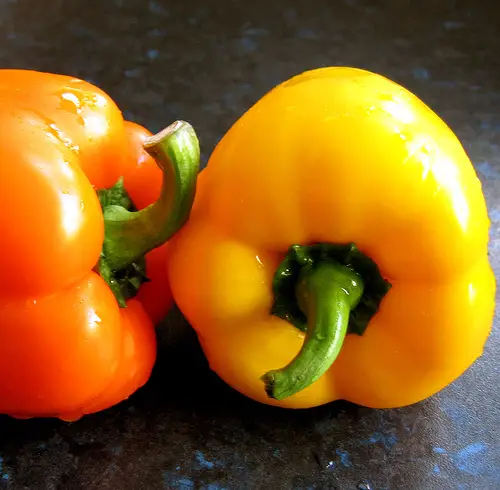Capsicum
Capsicum is a flowering plant in the Solanaceae family. Its species are native to the Americas, where they have been culivated for thousands of years before it spread worldwide. This humble fruit is used for a variety of purposes such as medicine or for health reasons. There are 20-27 different capsicum species, and are known around the world in a variety of names such as chilli pepper, red or green pepper, sweet pepper, bell pepper, paprika, or just capsicum.
Although there are 20-27 capsicum species, only 5 of these are domesticated. They are C. annuum, C. baccatum, C. chinense, C. frutescens, and C. pubescens. They vary in shape, size, and color between species which has caused some scientific confusion in terms of their categorisation. The fruit of most capsicum contain capsaicin which is a chemical that can produce a strong burning sensation – especially those who are unaccustomed to eating it. Most mammals find the taste rather unpleasant, however birds are unaffected by the taste. The secretion of capsaicin actually protects the fruit from being consumed by animals, while the bright colours attract birds so that it will spread its seeds.
Capsaicin is found in large quantity in the placental tissue and internal membranes of the fruit. In addition, other fleshy parts contains small levels of capsaicin. Contrary to popular belief, the seeds actually do not contain capsaicin but the highest concentration is actually found around the white pith that surrounds the seeds.
The amount of capsaicin present in the capsicum varies and depends on genetics. The only capsicum without capsaicin is the bell pepper, which has a 0 rating on the Scoville scale which is the scale used to measure how hot a chili pepper is. The reason why is does not have any capsaicin is due to a recessive gene which eliminates capsaicin.
Native Americans use chili as part of their traditional medicine, while capsaicin is used in modern medicine as a topical medication for analgesic and circulatory stimulant purposes. In addition, it has been used for aersol purposes for pepper spray. It has been used by the police as a non-lethal weapon as it can incapacitate a person without needing to use guns. As a result, it has been used for riot control or by individuals who want to use it for their own personal defence against potential attackers.
Capsicums can be eaten either cooked or raw. The species require cooking are C. annuum and C. frutescens species. However, there are a few other species that require cooking as well. These particular species are great for stuffings with fillings with rice, meat, or cheese. They are also often used in salads, stir-frieds, and other dishes as they can be easily stripped, frie,d roasted, chopped, and incorporated into sauces liks salsa. In addition, they can be preserved as a jam by freezing, pickling, or drying.
Dried peppers can also be reconstituted or processed into flakes or powders. Pickled peppers are great for sandwiches. Frozen peppers are used in stews, soups, and salsa. Its extract can be made into sauces.
C.frutescents (also known as barbare) is an important part of Ethiopian cuisine. This occurred as early as the 19th century, as it was cultivated extensively where ever the soil was suitable. Although it is grown in every province in Ethiopia, it is extensive in Yejju as it supplied the other neighbouring provinces. The entire upper Golima river valley was devoted to the cultivation of this plant.




